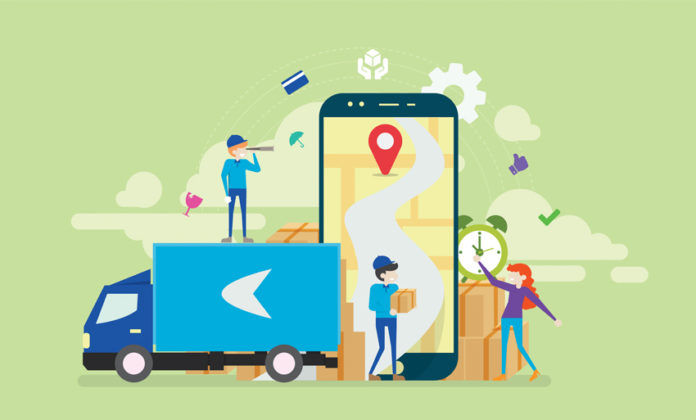We live in the day and age of personalization. Facebook creates personalized stories for each of their users on their anniversary of using the social media site. Target sends personalized coupons based on customer buying history to increase the likelihood of a future sale. Amazon does something similar their “You Might Also Like” feature after purchasing a product to potentially up-sell complementary or similar product.
And the push for personalization makes sense, too. When we think of something as ‘personal’, we think of something we have a bond with, a certain intimacy if you will. Personalization, according to Tech Target, is a “means of meeting the customer’s needs more effectively and efficiently, making interactions faster and easier and, consequently, increasing customer satisfaction and the likelihood of repeat visits”. This isn’t to be confused with customization, which is when a customer manually changes things to fit their preferences.
For example, in the music app Spotify, customization would be a customer building a playlist with all of their favorite songs, whereas personalization is when Spotify creates a “Daily Mix” for their user based on an algorithm that analyzes that users song history and preferences.
Essentially, personalization is customization in real-time. But why is personalization so important in business? According to a recent study, 79% of customers are only willing to take advantage of a brand promotion if it’s tailored to their previous interactions; additionally, 78% of customers say that personally relevant content increases their buying intent. The more personalized something feels, even if it’s an advertisement or offer, the more it feels like the business is paying attention to your particular needs.
So where do opportunities for personalization exist within a business?
There are plenty of easy-to-use, powerful tools that allow you to personalize emails, even when they are being sent to the masses. Mailchimp, Robly, Drip, and Autopilot are all easy-to-use platforms that can help you build a personalized email campaign. The personalization of the email often depends on the data you have collected from your customers.
The easiest way to personalize an email is to put the person’s name in the subject line. Making sure the content is relevant to the customer based on past buying history is also important. Even the timing of the email can be customized, as many campaigns allow you to segment by time zones and ensure the email reaches the customer’s inbox at the right time. Depending on the data you’ve collected from the customer, sending a birthday email and offering a freebee or discount is a simple way to gain customer loyalty.
Personalizing emails is worth the effort, too. Personalized emails had 29 percent higher open rates and 41 percent higher click rates than emails without any personalization.
Websites
Many feel that Amazon is the king of personalization in their website and for good reason, too. Based on past buying patterns and behaviors, Amazon is able to immediately recommend other products for customers as soon as they log on.
What are some more practical ways for businesses to personalize web page content?
Some companies who offer a specific product have their customers take a brief survey to personalize content. For example, clothing company Bombfell has their customers take a brief ‘style survey’ to give them the most relevant offers.
Others have an advertising ‘overlay’, where depending on the frequency of visits for a customer, an advertisement can pop up on screen targeted at the customer or offering a one-time discount.
It’s important not to pigeonhole customers into certain product lines in a form of hyper personalization. Letting customers discover new things while offering suggestions is the way to go.
Again, much like emails, website personalization has shown to yield positive ROI. Gartner predicts a 15% profit boost by 2020 for those who successfully handle personalization in eCommerce.
Social Media
Many think personalized content on social media is the next big thing (if it isn’t there already).
Some businesses offer their target demographic exclusive social media invitations to try new products in the hopes of those customers posting content featuring that product. It’s not a bad strategy, after all, about 71% of the consumers respond according to the feedback and recommendation of social users regarding a particular brand.
Keep in mind, it’s important to know what social media platforms your audience engages the most with. Homogeneous approaches are rarely successful and amount to wasted time and energy. A visual product would likely succeed more on Instagram or Pinterest, whereas Facebook would be a better platform for long-form posts.
Benefits of Personalization
Some of the statistics above emphasized the potential increase in conversions by targeting personal preferences and past purchases. In addition, conversions can be made more quickly (think ‘one-click’ purchasing) but there are other benefits as well.
It can build passion with your audience. For example, a sports apparel business who knows a batch of customers avidly support a particular team can send a blog article about that team to that group. That group doesn’t just love sports. They love that team. Targeting that niche level of passion can create long-lasting loyalty.
Along those lines, monotony is a killer of engagement, and that includes your website. Website and content personalization keeps things fresh and makes it so the customer doesn’t feel like they’re always going back to the ‘same old, same old’.
In addition to existing companies, personalization can nurture new customers. Depending on how they entered into your website (social media, through a campaign), there can be a customized welcome even without knowing any of their specific information.
Notice, all of these pros of personalization are meant to make the customer feel special and like an individual human being as opposed to just a ‘sale’.
Conclusion
Personalization is a major factor in modern-day business to having the customer come back for repeat purchases. With a little bit of customer data and knowledge of your customer persona, you can have a real-time customization of their buying journey.





